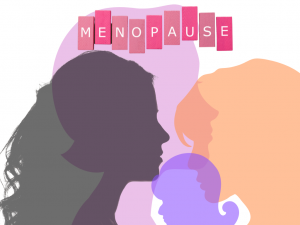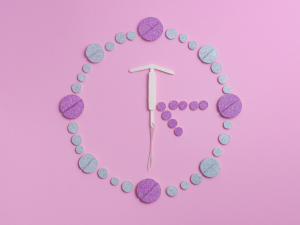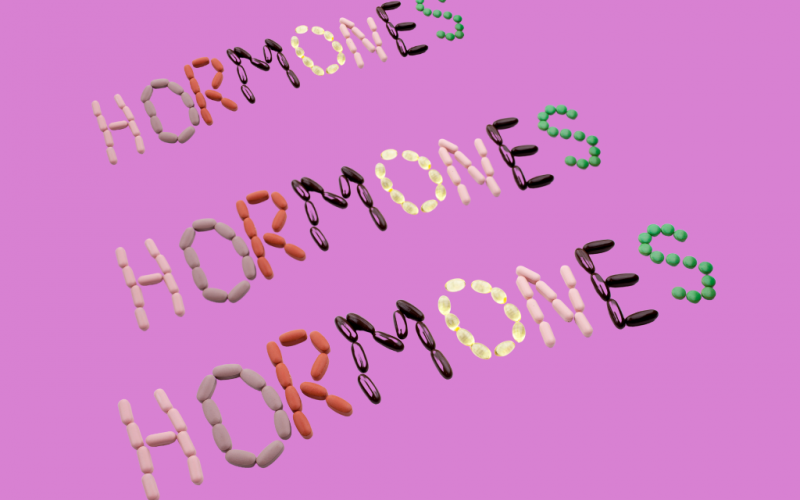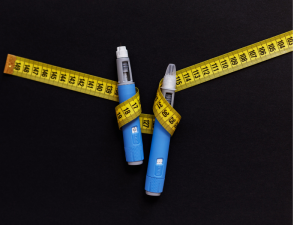Did you know that hormone replacement therapy (HRT) is now being called menopause hormone therapy (MHT)?
This post follows on from menopause, the inside scoop, which I recommend reading first for a fuller picture.
Some women and their doctors have been hesitant to use HRT following published studies highlighting the potential risks. However, more recent evidence states that HRT risks are small and usually outweighed by the benefits. Women need to make their own choices; here are the risks and benefits outlined on the NHS website.
Understanding HRT/MHT
Many women, along with their doctors, have been hesitant to use HRT due to earlier studies highlighting potential risks. However, more recent evidence shows that the risks are small and often outweighed by the benefits. Every woman should be able to make an informed choice, so here’s a breakdown of the risks and benefits outlined by the NHS.
What is HRT/MHT
HRT replaces the hormones that the body no longer produces due to menopause. The two main hormones used in HRT are:
- Oestrogen – Types include estradiol, estrone, and estriol.
- Progestogen – Two options i. synthetic version of progesterone (such as dydrogesterone, medroxyprogesterone, norethisterone, and levonorgestrel) ii. or micronised progesterone (sometimes called “body-identical” or “natural”), which is chemically identical to the human hormone.
HRT can be:
- Combined HRT (both oestrogen and progestogen)
- Oestrogen-only HRT (recommended if you’ve had a hysterectomy)

Blood tests while on HRT
Hormone levels fluctuate daily, so blood tests are not necessary for women over 45. Routine blood tests are recommended before starting HRT, though, to rule out other concerns, such as thyroid disorders, and can guide dosage adjustments. However, they are just one part of the picture. It’s always important to consider the whole clinical picture, especially how someone feels and how their symptoms have changed.
Ways of Taking HRT
HRT comes in several forms. Speak to a GP about the pros and cons of each option.
1. Skin Patches (transdermal option). One of the most commonly used forms of HRT in the UK, skin patches are available as oestrogen-only or combined (oestrogen and progestogen). They do not increase the risk of blood clots and can help avoid some side effects associated with oral HRT.
2. Gels and Sprays (transdermal option). Increasingly popular, gels and sprays are applied to the skin once a day. They do not increase the risk of blood clots, but if you still have a womb, you’ll need to take a separate progestogen to reduce the risk of womb cancer.
3. Tablets. A widely used option, tablets are available as oestrogen-only or combined HRT. They are often the simplest way to take HRT, but they come with a slightly higher risk of blood clots compared to transdermal options.
4. Intrauterine System (IUS). Although primarily used for contraception, the IUS releases progestogen into the womb and can be used as part of HRT. It remains in place for 3 to 5 years and can be an alternative to taking separate progestogen.
5. Implants. HRT implants, small pellets inserted under the skin (usually in the tummy area), gradually release oestrogen over several months. They are less commonly used in the UK and are not widely available. If you have a womb, you’ll need to take progestogen separately.
Note: The number of HRT prescriptions in the UK has been rising, with an increase of 22% in the last year. Transdermal options (patches, gels, and sprays) are now more commonly prescribed than oral tablets.
Vaginal oestrogen
If vaginal dryness or irritation is your main concern, oestrogen creams, pessaries, or rings may help and can be taken alone or in conjunction with systemic HRT. It will also help with some bladder symptoms, such as reoccurring UTI and frequency. Unlike systemic HRT, vaginal oestrogen doesn’t carry the usual risks and doesn’t require additional progestogen. Note this will not relieve other symptoms.
Testosterone
It is available as a gel that you rub onto your skin. It is not currently licensed for women, but it can be prescribed after menopause by a specialist doctor if they think it might help restore your sex drive.Testosterone is usually only recommended for women whose low sex drive (libido) which does not improve after using HRT. It is used alongside another type of HRT, the potential side effects include acne and unwanted hair growth.

Types of HRT: Body-Identical vs Bio-Identical
- Body-identical HRT is licensed, regulated, and available via NHS and private menopause specialists.
- Bio-identical HRT (compounded bioidentical hormone replacement therapy, cBHRT) is unregulated and often marketed by private clinics and can be costly.. The British Menopause Society warns against its use due to a lack of evidence supporting its benefits over licensed HRT. According to the US Food and Drug Administration (FDA), “bioidentical” and “natural” HRT aren’t safer than hormones used in traditional hormone therapy, and there’s no evidence that they’re any more effective. The British Menopause Society ‘bioidentical’ is often used as a marketing term by clinics purporting the benefits of cBHRT.
Ref – https://thebms.org.uk/publications/consensus-statements/bioidentical-hrt/
Benefits of HRT
HRT can help relieve:
- Hot flushes
- Night sweats
- Mood swings
- Vaginal dryness
- Reduced sex drive
It can also help prevent osteoporosis, reducing the risk of fractures.
Risks of HRT
The risks are usually minimal and depend on the type of HRT taken, the length of time it is taken, and the general health risks.
Breast cancer
- There is little or no change in the risk of breast cancer if you take oestrogen-only HRT.
- Combined HRT can be associated with a slight increase in the risk of breast cancer.
- The increased risk is related to how long you take HRT, and it falls after you stop taking it.
- Because of the risk of breast cancer, it’s essential to attend all your breast cancer screening appointments if you’re taking HRT.
Blood clots
The evidence shows that:
- Patches and gels do not increase the risk of blood clots.
- Tablets can slightly increase the risk, but the overall risk remains low.
Heart disease and strokes
- HRT does not significantly increase cardiovascular disease risk if started before age 60.
- HRT tablets may slightly increase the risk of stroke, though this remains small for women under 60.
Medicinal alternatives to HRT.
- Tibolone (Livial) – A prescription medication similar to combined HRT, used post-menopause. Side effects can include breast tenderness and vaginal discharge.
- Antidepressants (SSRIs & SNRIs) – Sometimes used for hot flushes, though not officially licensed for menopause. Side effects may include nausea and dizziness.
Liefstyle and diet alternatives to HRT.
- Regular exercise
- Stress management
- Cutting down on caffeine ( coffee, tea, cola) may help reduce hot flashes. Spicy food may also contribute to the feeling of heat rising in your body.
- Alcohol has been linked to making hot flashes worse.
- Supplementing with: Vitamin D, Omega-3s, Magnesium, and Calcium
- Herbal options: Black cohosh, maca, red clover, sage, milk thistle, valerian root, and evening primrose oil
- Complementary therapies: Acupuncture, tai chi
Final words
Menopause is a significant life transition, and the amount of information available can feel overwhelming. My hope is that this guide gives you a clearer understanding of your options. Even if you don’t experience severe symptoms, hormonal changes can impact your long-term health, so it’s worth taking the time to consider what’s best for you.
If your GP is resistant to discussing menopause or prescribing HRT, these resources may help:
- Menopause Support – menopausesupport.co.uk
- Women’s Health Concern – womens-health-concern.org
- British Menopause Society – thebms.org.uk
- GMC Ethical Guidance for Doctors – gmc-uk.org
Your menopause journey is unique—take the time to make the right choices for you.







